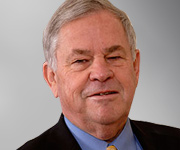MOST of the world is yet to have access to any effective form of primary care. This is a tragedy created by lack of practitioners and infrastructure, prohibitive fees, and indifference to the plight of the poor.
About 300 000 mothers, many of them teenagers, die each year in childbirth for lack of simple primary care in the least economically developed nations. But there are encouraging signs.
In the 6 years I have been visiting India as part of a review team invited by the Ministry of Health, I have seen maternal mortality reduced by women in remote villages — trained for a couple of days and equipped with no more than a mobile phone and a bicycle — who help pregnant women gain access to safe environments providing postpartum treatment and basic support for mother and child. There are now 800 000 of these women working in India.
Simple changes that take account of local needs and conditions can have a huge effect.
Australia has about 25 000 general practitioners and I marvel at their commitment and creativity as they have adapted to working together in new ways through Divisions of General Practice and now in the more comprehensive Medicare Locals.
They are reformatting the way we provide primary care and adapting to the challenge of long-term support for people with serious and continuing illnesses. But there is more to be done.
In the latest issue of the MJA, former Royal Australian College of General Practitioners president Claire Jackson reviews progress in response to the National Primary Health Care Strategy.
Despite improvements in integrating primary care with other services, achievements in e-health, an increase in general practice registrar positions, and improved coordination of people with complex needs, we still have some way to go with workforce, access to services, integration with the secondary and aged care sectors, and fiscal efficiency.
The diverse roles of general practitioners, as they care for people in individually negotiated ways, are also featured in this issue of the MJA.
Researchers bring some data to the much-contested topic of publicly funded homebirth. The impact of incentives for general practitioners and parents on rates of vaccination is revealed and the reason for increased notifications of pertussis in recent years is investigated.
Other research findings that many parents of children with food allergies have trouble interpreting food warning labels will not surprise many general practitioners.
The problem of transitional care for older children with rare diseases is discussed, with a role for specialist general practice clinics suggested.
For clinical fodder, the first article in the MJA’s new Cardiology series revisits the importance of absolute cardiovascular disease risk in primary prevention.
The challenges facing general practice include the sheer diversity of clinical responsibility, making sense of new bureaucratic fantasies and upheavals, adapting to reporting schedules for new services that remind us of the adage “pulling up seedlings to see if the roots are growing”, and distribution of an ageing workforce.
Matters of money, lagging fee schedules, and work conditions, such as long hours and lack of locum relief, can cause great stress. Yet general practitioners remain at their posts.
Why? I venture it is because they experience great and appropriate satisfaction from the connections they make with the people who come to them for care, as reflected in a tale of coming to understand a patient at the end of life.
Nothing else makes sense as an explanation.
In this issue, the MJA offers articles drawn from a range of disciplines relevant to general practice. This diversity underscores general practice’s central place in the health system of what is, after all, a country blessed with a sophisticated, highly skilled and increasingly integrated health care workforce.
Professor Stephen Leeder is the editor-in-chief of the MJA.

 more_vert
more_vert
“Australia has about 25 000 general practitioners and I marvel at their commitment and creativity as they have adapted to working together in new ways through Divisions of General Practice and now in the more comprehensive Medicare Locals.” Profssor Leeder you need to get out more, most creativity and commitment happens outside the bureacratic confines of the Divisions and (now a quarter of a billion dollars later for the name change) the poorly named Medicare Locals.
These are good words. But many reports tell of unhappy GPs and dissatifaction amongst the public.
The inability to earn a reasonable income any other way leads GPs to “turnstile” fee-for-service throughput, shoddy management, often pointless “testing” and unnecessary interventions.
It de-values the potentially most important contact with the patient, leading to misunderstandings which are usually expensive, sometimes dangerous.
The computer makes much health information available. It certainly informs but often confuses the lay public. A trained human mind is still needed to sort out the presenting human problems.
That’s where the GP should come in, but perfunctory consultations aren’t good enough. Time is needed for a conversation and shared understanding. At present , for the reasons above, this is often not happening, and we are left with disappointing experiences for all involved parties.